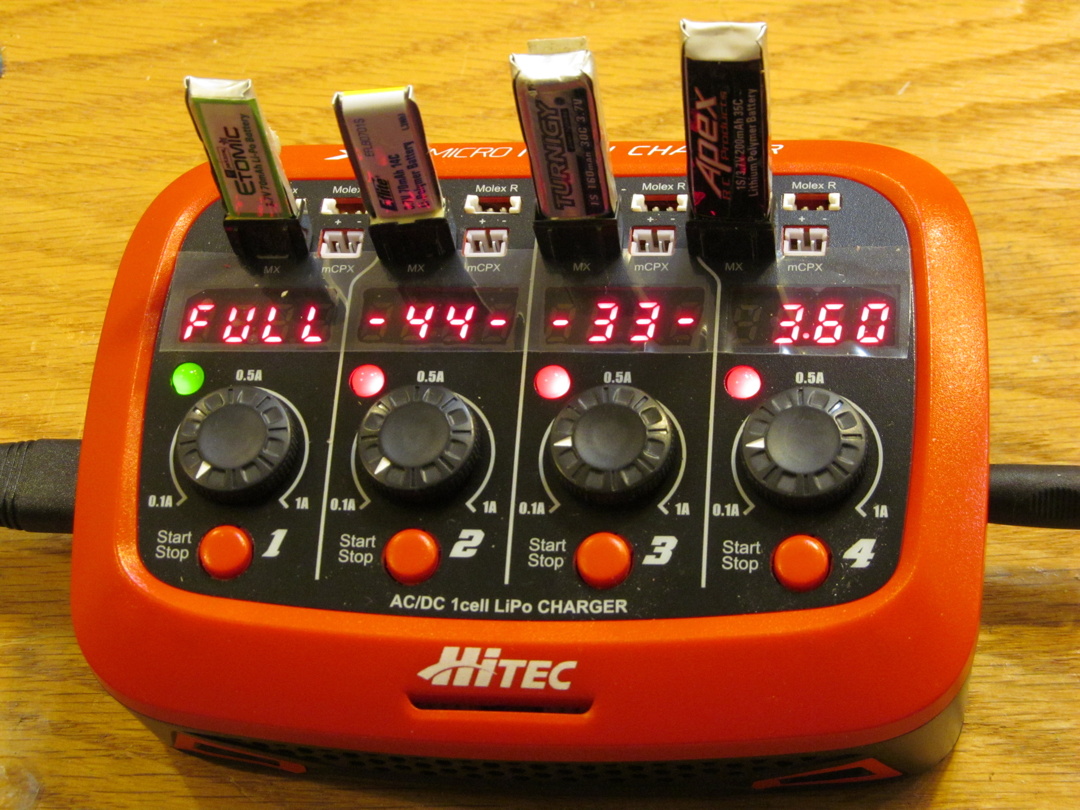bobkrech
Well-Known Member
- Joined
- Jan 20, 2009
- Messages
- 8,352
- Reaction score
- 55
That definitely looks like some type of discharge/charge limiter. I'm amazed that they would put multiple units in parallel because of the cost....Photo of the charge controller consisting of four six-lead SMD packages (probably four identical charge controllers in parallel for increased current handling capacity considering they're such tiny packages) found inside one of my Hubsan X4 packs that I'm using in my Hubsan X4 battery-compatible YiZhan X4. That's a nickel in the background.
EDIT: I'll say that those are definitely ganged charge controller ICs seen in the photo but whether they limit max discharge to protect the pack from over-discharge if left in, for instance, a lost quad I'm not not at all certain about and tend to doubt. One person on the forums implies that toy grade quad battery pack over-discharge (low cell voltage) protection is located on (most) quad controller boards (which makes the most sense) while another claims that both the charge controller and over-discharge protection is built into the packs.
Having witnessed the UN LiPo battery tests, the one that is really bad is overcharging at higher than 4.2 volts. If you follow the UN test procedure, in the battery test I witnessed the battery caught fire after 15 minutes! Even if the charging had been stopped prior to that, chances are the battery is already damaged and will fail catastrophically in the near future.
That's why you have to use a LiPo charger.....
Bob





